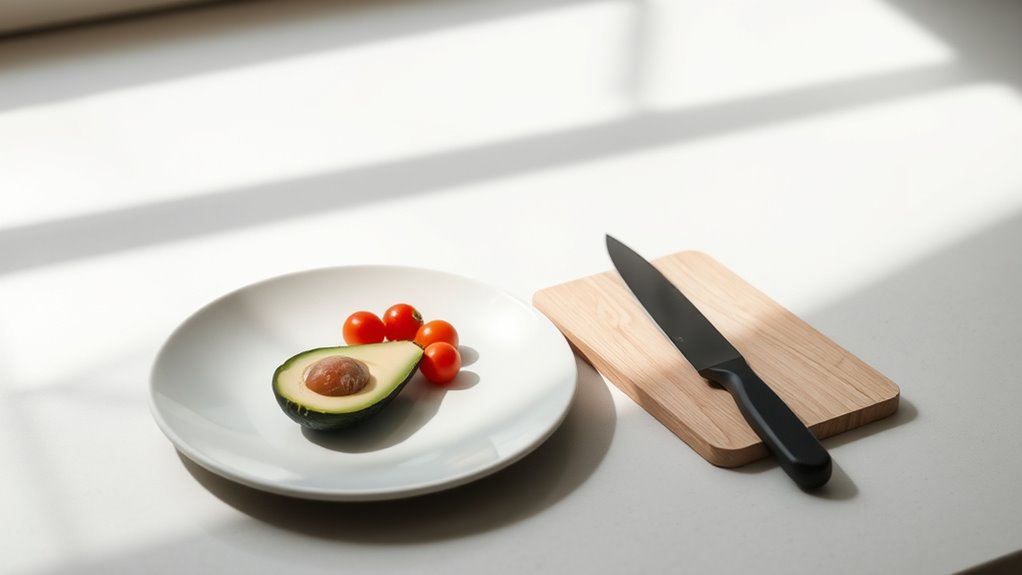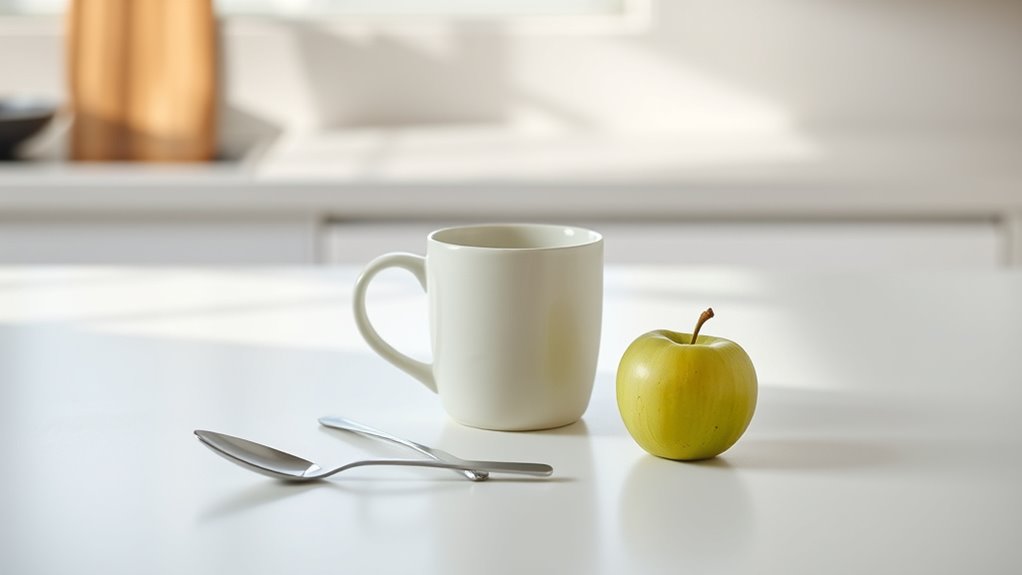Adopting Dieter Rams’ “less but better” mindset encourages you to focus on making intentional choices that prioritize quality over quantity. By simplifying your surroundings and belongings, you create a calmer, more meaningful environment. This approach promotes sustainability, reduces clutter, and helps you appreciate craftsmanship. When you choose fewer, higher-quality items, you support eco-conscious living and find greater satisfaction. If you want to learn how to apply this philosophy daily, there’s more to discover below.
Key Takeaways
- Dieter Rams advocates for reducing clutter to enhance clarity and functionality in design and life.
- The principle emphasizes choosing quality over quantity to make better, more mindful decisions.
- “Less but Better” promotes sustainability by encouraging durable, well-crafted possessions.
- Applying Rams’ philosophy leads to a more intentional lifestyle focused on what truly matters.
- Minimal design inspired by Rams supports mental clarity, eco-consciousness, and long-lasting value.

In a world obsessed with more, choosing less can lead to a richer, more intentional life. When you embrace simplicity, you start to see how minimal design transforms not just your surroundings but your mindset. Instead of cluttering your space with countless objects, you focus on what truly matters, creating an environment that’s calm, functional, and inspiring. Minimal design isn’t about deprivation; it’s about intentionality—selecting quality over quantity and stripping away the unnecessary. This approach encourages you to value craftsmanship and durability, which naturally aligns with sustainable living. By reducing your consumption and choosing items that last, you lessen your environmental footprint, making your lifestyle more eco-friendly and conscious.
Choosing less isn’t just about aesthetics; it’s a statement of values. It’s about resisting the urge to accumulate and instead opting for purpose-driven choices that serve your needs without excess. When you adopt this mindset, you start to see how your everyday decisions ripple outward, influencing everything from the products you buy to how you manage your time. Sustainable living becomes a natural extension of this approach because it emphasizes mindful consumption, reducing waste, and supporting eco-conscious brands. You begin to appreciate that every purchase has an impact, and with less, you can focus on quality, longevity, and the story behind what you bring into your life.
Dieter Rams’ philosophy highlights that good design is honest, unobtrusive, and long-lasting. Applying this to your lifestyle, you realize that less clutter and fewer possessions lead to more clarity and peace of mind. You’re not just decluttering your space; you’re decluttering your mental space, too. When you prioritize what’s essential, your energy is freed for more meaningful pursuits. You see how minimal design can serve as a tool for sustainability—creating a harmonious balance between aesthetics and eco-consciousness. This balance encourages you to invest in fewer, better things, which ultimately supports a more sustainable, fulfilling way of living. One way to incorporate this philosophy into your daily routine is by choosing quality items that stand the test of time, such as durable clothing or well-made furniture.
Frequently Asked Questions
How Does Rams’ Philosophy Apply to Modern Technology?
You can see Rams’ philosophy in modern technology by prioritizing aesthetic simplicity and enhancing user experience. Focus on designing devices that are intuitive and clutter-free, making interactions effortless. By stripping away unnecessary features, you create products that are not only visually appealing but also easier to use. This approach guarantees technology serves you efficiently, emphasizing quality over quantity, and fosters a more satisfying, streamlined user experience.
Can “Less but Better” Improve Mental Well-Being?
Think of it as killing two birds with one stone—”less but better” can boost your mental well-being. When you practice mindful eating and simplify your surroundings, you gain emotional clarity and reduce stress. Cutting back on clutter and distractions helps you focus on what truly matters, making your mind clearer and more balanced. Embracing simplicity allows you to enjoy life’s moments fully, fostering a healthier, more peaceful state of mind.
Are There Cultural Differences in Embracing Minimalism?
You might notice that cultural perceptions profoundly influence how people embrace minimalism. Some cultures value minimalist aesthetics for its simplicity and clarity, while others see it as too sparse or restrictive. Your attitude toward minimalism can depend on these cultural norms, shaping whether you find it appealing or limiting. Ultimately, understanding different cultural perceptions helps you appreciate diverse approaches to minimalism and decide what resonates most with your personal style and values.
How Do Designers Balance Simplicity With Functionality?
Imagine a clear window revealing the world behind—this is what you aim for in design. You balance simplicity and functionality by focusing on user interface and visual clarity, removing unnecessary clutter that distracts. Every element should serve a purpose, guiding users effortlessly. By embracing minimalism, you create designs that are elegant yet effective, ensuring users find what they need swiftly without feeling overwhelmed, like looking through a pristine, unobstructed glass.
What Are Common Challenges When Adopting This Approach?
When adopting minimalist aesthetics, you often face challenges balancing simplicity with functionality. You might struggle to meet consumer habits that favor more features or elaborate designs. Stripping down elements can make your product less appealing or harder to use, risking user dissatisfaction. You need to carefully prioritize essential functions, ensuring your design remains clean and effective without sacrificing usability or the expectations shaped by consumer habits.
Conclusion
Imagine walking into a room filled with clutter, feeling overwhelmed by excess. Now picture a space where every item has purpose, beauty, and simplicity, creating calm and clarity. That’s the power of “less but better.” By choosing quality over quantity, you craft a life that’s peaceful and intentional. Embrace this mindset, and watch as your world transforms into a serene haven—where every detail matters, and you feel truly at home.










